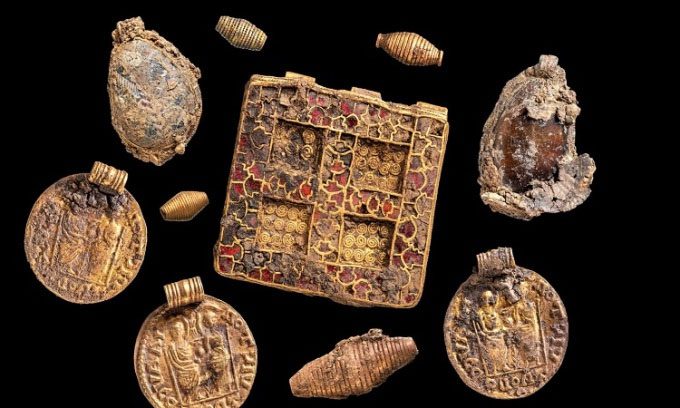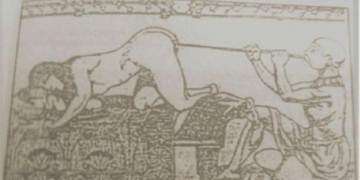Archaeologists have discovered a 1,300-year-old necklace made of gold, garnet, and various other semi-precious stones at an archaeological site in central England.

Decorative features on the necklace. (Photo: MOLA)
The necklace and several other valuable items are referred to as the Harpole Treasure, discovered in the local parish of Northamptonshire, where artifacts were excavated in April, CNN reported on December 7. The treasure reveals the significant role of certain women during the Anglo-Saxon period.
The necklace was buried with a high-status woman who died between 630 and 670, according to the research team at the Museum of London Archaeology responsible for the excavation. In addition to the necklace, they also found a relatively large silver cross, two decorative ceramic jars, and a shallow bronze dish. The jewelry indicates that the woman was very powerful and revered, possibly a leader, princess, or abbess.
The necklace consists of 30 decorative pieces and beads made from gold, garnet, glass, and semi-precious stones, hanging alongside Roman coins. The archaeological team discovered the item during an eight-week excavation, according to Levente-Bence Balázs, who was the first to find the treasure. He spotted the rectangular pendant in the center of the necklace while digging in a rubbish pit at the site.
X-ray results of the soil from the grave revealed a finely crafted silver cross adorned with a human face. Organic material in the grave contained fragments of hair and skin. The two ceramic jars may have originated from what is now France or Belgium. They hope that molecular analysis will help identify the residue inside the jars.
The skeleton in the grave was completely decomposed, except for small fragments of tooth enamel. However, the necklace and other features led the archaeologists to confidently believe that the grave’s owner was a woman. There are about a dozen high-status women’s graves that have been found in England. In some cases, similar necklaces were found in the graves. However, very few graves date back earlier than the 7th century.





















































